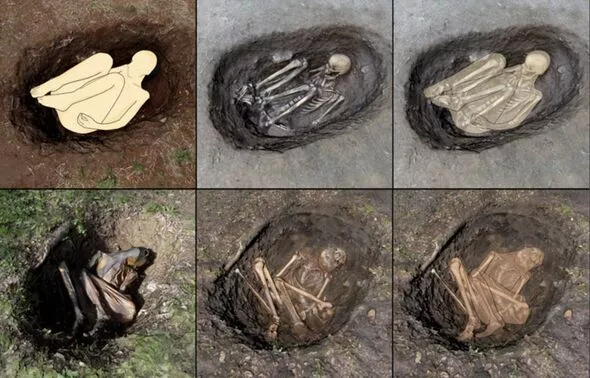Mummies uncovered in Portugal date back 8,000 years and could be oldest in the world
Archaeologists are set to rewrite the history books after they uncovered new evidence that suggests the oldest instances of mummification occurred 8,000 years ago.
Researchers have taken a second look at photographs snapped 60 years ago of several skeletons that were buried in southern Portugal.
A new analysis of these photos has led them to believe that the oldest evidence of mummification actually originated in Europe, not Egypt or Chile as previously thought. During excavations in the 1960s, archaeologists discovered nearly a dozen ancient bodies in Portugal’s Sado Valley.
Analysing previously undeveloped photos, researchers now believe that at least one of those bodies had been mummified.
They theorise that this was done to possibly make it easier to transport before its burial.
Experts also found evidence that suggests that other bodies that were buried at the site may have been similarly preserved as mummies, implying that this was a widespread practice in the region.
Mummification is most commonly associated with Ancient Egypt, where elaborate burial procedures were used more than 4,500 years ago.


Other evidence of mummification outside Egypt is found in other parts of Europe, dating from about 1000 BC.
However, archaeologists have now dated this person as the oldest mummy ever discovered, predating all previous instances by a long time.
This newly identified mummy in Portugal pushes back the previous record by about 1,000 years, then held by mummies found in the coastal region of Chile’s the Atacama Desert.
When it comes to hot and dry regions like Egypt and the Atacama desert, mummification is a relatively straightforward process.
However, it is generally difficult to find evidence of mummies in Europe, where much wetter conditions mean that mummified soft tissues rarely stay preserved, according to Rita Peyroteo-Stjerna, a bioarchaeologist at Uppsala University in Sweden.
Speaking to Live Science, Ms Peyroteo-Stjerna, the lead author of the study said: “It’s very hard to make these observations, but it’s possible with combined methods and experimental work.”
Other authors of the study added: “These burials generally conform to the pattern characteristic of the mortuary practices known for these hunter-gatherer communities, but aspects of the treatment of the body, including its transformation and curation before burial, are new elements.


“New insights into the use of burial places, such as a very tight clustering of burials, and the proposed cases of mummification and the subsequent internment of hyperflexed, intact bodies highlight the significance of both the body and the burial place in the wider hunter-gatherer landscape of south-western Portugal.”
After observing the photographs, the archaeologists noted that the bones of the buried skeletons were “hyperflexed”, meaning that their limbs have been bent far beyond their natural limits.
This indicates that after the person’s death, the body had been tied up with bindings that have disintegrated since then.
The team also found that the bones of the skeleton were in excellent condition, particularly the small bones of the feet, which generally fall apart completely from the skeleton as the body decomposes.





